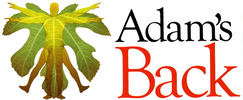|
21/3/2019 1 Comment Curiosity of CrampsHow can I best support my aching body?If you’ve ever experienced muscle cramps, you will know the searing pain and the panic to get rid of it. With such intense agony, you’d expect to be able to find out what it’s all about, but no one understands what causes it or even how it happens.
A muscle cramp, also referred to as a charley horse, is a painful muscle contraction that usually occurs in your lower legs. Many people get them after exercise, but some people suffer from muscle cramping for seemingly no reason at all. Ever hear someone say that cramps are caused by a lack of salt? For quite some time it was suggested that dehydration and electrolyte imbalance caused cramps. This theory is based on mostly observational evidence, so while there may be an association, it hasn’t been proven. And surely if it were true wouldn’t all the muscles in your body be affected? What researchers have determined is that cramps tend to happen in muscles that are actively used and especially those that cross more than one joint. Cramps also occur more often at the start of a sports season when muscles have had less use, and at night in people who are inactive. Fatigue is believed to be a contributing factor, particularly in endurance athletes who need to have fast-contracting muscle fibres. Muscle cramps also appear to affect men more than women. This may be due to men having more fast fibres, or that women don’t get as tired during the same level of exercise intensity. Even though there is so much left to discover about cramps, there is evidence to suggest they affect some people more than others. Nocturnal cramping is prevalent in the elderly, and pregnant women notice cramps to be higher in intensity during the second and third trimesters. With so many theories and little evidence, it can be hard to offer a solution. The once widely accepted solution of taking magnesium and salt tablets is now questionable, and stretching the contracting muscle may end up causing further harm. Should you experience a cramp, the best immediate action you can take is to stretch the muscle opposite to (in the muscle pair) the cramping muscle. Additionally, if fatigue is thought to be a factor, plenty of fluids and electrolytes may also be of assistance.
1 Comment
7/3/2019 0 Comments At a StretchStretches may be included as part of a therapy program, and/or recommended to be done at home on a daily basis.GENERAL TIPS FOR STRETCHING
To help effectively stretch the muscles without injury:
Stretches that are not recommended include neck circles (where the head is repeatedly rolled around the neck) or quickly stretching the neck forward and backward or side to side. These stretches may cause muscles strain or place additional stress on the cervical spine. If you are unsure or need assistance make sure to ask one of our friendly practitioners during your next appointment. |
AuthorAdam's Back is a team of dedicated complimentary health professionals. Our aim is to support you in finding drug-free solutions for better health. Archives
July 2024
Categories |
Search by typing & pressing enter

 RSS Feed
RSS Feed